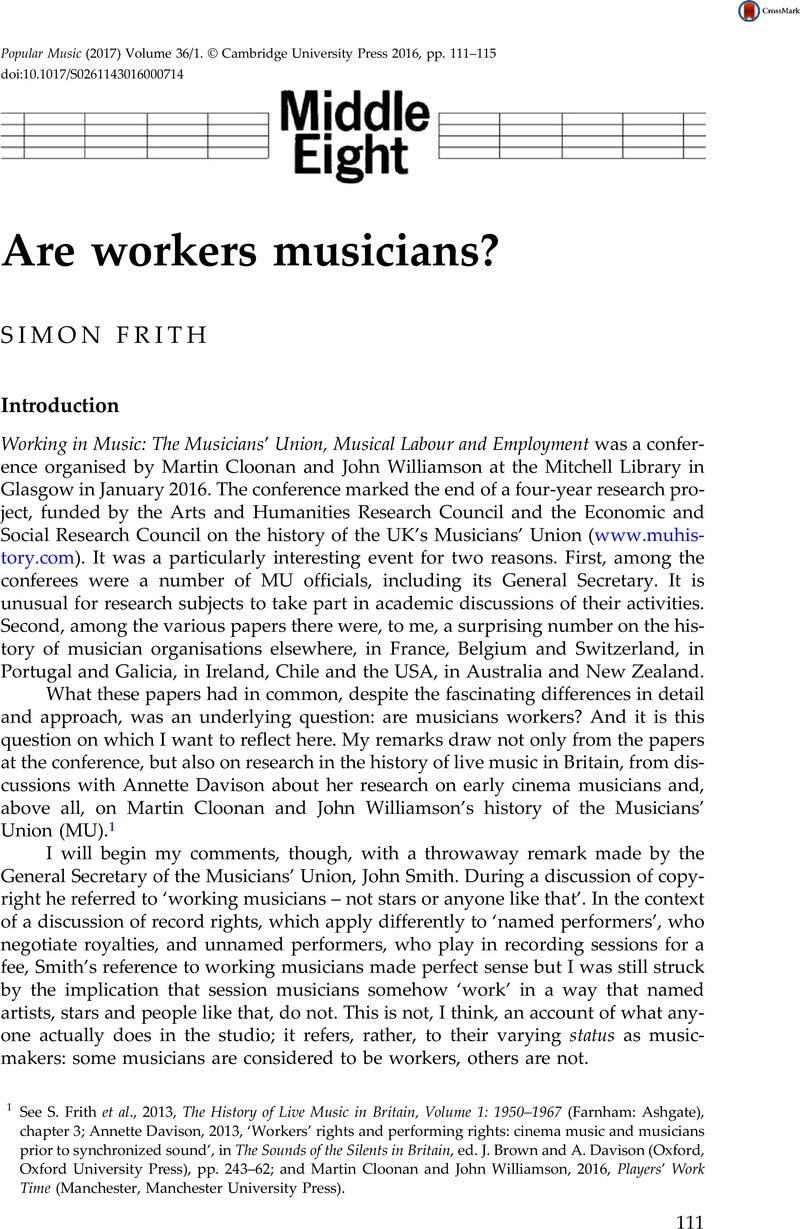
1 See Frith, S. et al. , 2013, The History of Live Music in Britain, Volume 1: 1950–1967 (Farnham: Ashgate), chapter 3Google Scholar; Davison, Annette, 2013, ‘Workers' rights and performing rights: cinema music and musicians prior to synchronized sound’, in The Sounds of the Silents in Britain, ed. Brown, J. and Davison, A. (Oxford, Oxford University Press), pp. 243–62Google Scholar; and Cloonan, Martin and Williamson, John, 2016, Players' Work Time (Manchester, Manchester University Press)Google Scholar.
2 ‘Internationalism’, Musicians' Journal, 24 April, p. 5. Cyril Ehrlich characterised the difference between the London Orchestral Association (and other musicians' societies and organisations) and the AMU with the cricketing analogy of Gentlemen vs. Players, but this is not quite right. Gentleman cricketers were assertively amateurs; members of the London Orchestral Association were equally assertively professionals. See Ehrlich, Cyril, 1985, The Music Profession in Britain Since the Eighteenth Century: A Social History (Oxford, Clarendon Press), pp. 121–63Google Scholar.
3 Most orchestral musicians do go through formal assessments and exams for entry into conservatoires, the usual route into the classical music ‘profession’, but there are exceptions even here.
4 One question this raises is how widely the MU can and should define ‘musical labour’. Is a music teacher a working musician? Most working musicians certainly teach.
5 This is usefully documented in Benjamin Wolf's PhD thesis, ‘Promoting new music in London, 1930–1980’, Music, Royal Holloway, 2010.
6 Stefan Collini, Review of D.J. Taylor's The Prose Factory, The Guardian, 9 January 2016, p. 9.
Please note a has been issued for this article.